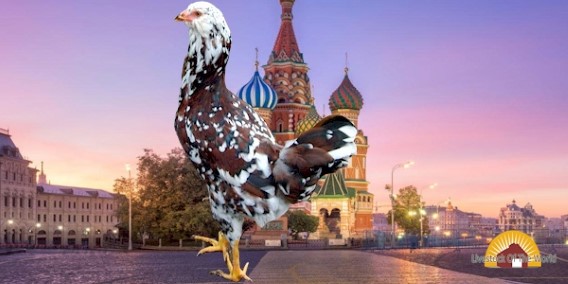Orloff, also
known as Russian Orloff, chickens are named after Alexei Grigoryevich Orlov, a
Russian Count. For most of its history, the Orloff was considered to be a
product of Russia and Orlov, but modern research has discovered that the breed
first appeared in Persia, and was distributed across Europe and Asia by the 17th
century. However, Count Orlov was a key promoter of the breed in the 19th
century, and the breed became known in the West following his efforts.
Orloffs were
first introduced to Great Britain in the 1920s, and were also refined a good
deal in Germany; Germans created the first miniaturized Orloff by 1925. They
were once included in the American Poultry Association's breed standard, the
Standard of Perfection, but it was removed due a lack of interest from
breeders. In the 21st century, the Orloff remains a rare breed in the West. The
Livestock Conservancy lists the breed as critically endangered.
They are tall,
well-feathered chickens with a somewhat game-like appearance. Their head and
neck are very thickly feathered. They appear in several color varieties: Black,
White, Spangled, Black-tailed Red, Mahogany, and Cuckoo. Their plumage,
combined with their tiny walnut comb, small earlobes and minuscule wattles, makes
the Orloff a very cold-hardy breed. The males generally weigh 3.6 kilograms
(7.9 lb) and hens about 3 kg (6.6 lb).
Orloffs are
primarily bred for meat production, but hens are reasonable layers of light
brown eggs and do not usually go broody. They are relatively calm birds.
